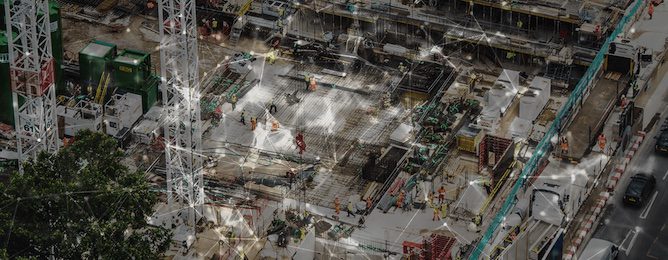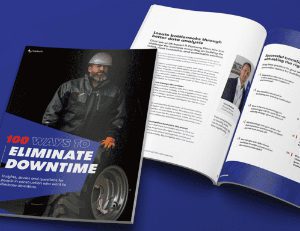

Many of these projects were underway before 2020, with joint strategic plans and investment in infrastructure projects already in place. Since the global pandemic, new impetus and ambitious funding have been introduced to kick start construction within many economies after the various lockdowns.
Singapore is a strategically important location, both physically and technologically, with its open culture and digitally native, relatively young population. Previously, I was regional director for a global technology infrastructure organization, and managing the region for over two decades I was involved in the massive rise in digital transformation in the data center market.
I see a great deal of symmetry between that change and what is happening in construction today, and this energized environment is set to generate many new opportunities for collaborative development.
Now, as SVP for the Asia Pacific Japan (APJ) region at Trackunit, I’m looking forward to driving initiatives that will bring the construction ecosystem in that region together.
Digitalization is the platform that will continue to modernize the construction supply chain. Telematics capabilities to deliver valuable data to the right people when it is needed is a key driver that will foster collaboration across the value chain. Shared standards across our markets, and the industry, and the adoption of open processes will allow shared data to increase productivity, improve products, advance safety on sites as well as reduce costs, and enhance sustainability. Digitalization is also a pathfinder technology for monitoring construction emissions and China is close to implementing legislation that will require construction machines to monitor CO2 emissions by 2022, this will require a massive uptake of telematics across the region.

Singapore, where building space is at a premium, a collaboration between construction, unions, academia, and government created the Construction Industry Transformation Map (CITM), and digitalization is a central plank in the three key areas of its development:
The Singaporean government understands the potential of digital transformation in the delivery of its ambitious plans. It has integrated digital delivery into its tenders which account for around 50% of the total value of construction tenders this year.
Japan has the largest concentration of construction OEMs in our region. And the government has delivered an initiative called i-Construction, with the Ministry of Land, Infrastructure, Transport and Tourism dedicated to improving the productivity of the entire construction production system by introducing measures such as ‘Full utilization of ICT’ at construction sites. This initiative is bringing together the public and the private sector to speed up technology adoption. Faced with potential labor shortages from an aging workforce and a declining birth rate, Japan is committed to proving that industrial growth through innovation is possible.
Data collection and sharing are essential for the plan to be successful, and it is important, where standards are agreed, that these are compliant with corresponding data standards in other regions. This will allow applications to be developed that are interoperable across regions providing the competitive element and allowing industry devices and software to be globally available.
In Australia, it is now a priority, with public and private initiatives, to reduce CO2 emissions as well as ensuring higher levels of safety across the construction industry.
The capability to leverage technologies such as telematics is essential in such a large country with many remote construction sites.
The APJ region is one of the largest global markets for construction. Its rapid urbanization and infrastructure requirements across fast-growing economies were estimated to have reached (US) $6.7 trillion in 2020, subject to COVID-19 reductions. However, many market analysts believe that it now accounts for over 50% of global construction output, and this figure is set to double within the next decade according to the ‘Global Construction 2020’ report, published by Global Construction Perspectives and Oxford Economics. As mentioned earlier, with Chinese regulators ready to introduce policies that require Off-Highway Vehicles (OHV) to monitor and track emissions, by 2022, this will heavily leverage telematics technology across the region.
Industry Dialogue is Required
Expanding Trackunit’s capabilities across the region will allow us to contribute to wider global industry dialogue and demonstrate how standards-compliant data technology can assist our customers in connecting with data transformation. Since joining Trackunit, I have had the opportunity to become acquainted with the Eliminate Downtime movement and the latest publication ‘Blueprint for Data Sharing in Construction’. These are valuable reference tools that all construction organizations should review, as they provide channels to closer relationships across the construction supply chain, that will help develop the data platforms that drive our industry forward.

APJ is a highly diverse market, and key to its future is the ability to collaborate around data standards. These benchmarks will provide the platform for new developments in hardware, software, and human interaction that will improve our productivity, whilst increasing our sustainability.

Never miss an insight. We’ll email you when new articles are published on this topic.

